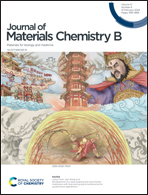Advanced strategies for CRISPR/Cas9 delivery and applications in gene editing, therapy, and cancer detection using nanoparticles and nanocarriers
Abstract
Cancer remains one of the deadliest diseases, and is characterised by the uncontrolled growth of modified human cells. Unlike infectious diseases, cancer does not originate from foreign agents. Though a variety of diagnostic procedures are available; their cost-effectiveness and accessibility create significant hurdles. Non-specific cancer symptoms further complicate early detection, leading to belated recognition of certain cancer. The lack of reliable biomarkers hampers effective treatment, as chemotherapy, radiation therapy, and surgery often result in poor outcomes and high recurrence rates. Genetic and epigenetic mutations play a crucial role in cancer pathogenesis, necessitating the development of alternate treatment methods. The advent of CRISPR/Cas9 technology has transformed molecular biology and exhibits potential for gene modification and therapy in various cancer types. Nonetheless, obstacles such as safe transport, off-target consequences, and potency must be overcome before widespread clinical use. Notably, this review delves into the multifaceted landscape of cancer research, highlighting the pivotal role of nanoparticles in advancing CRISPR/Cas9-based cancer interventions. By addressing the challenges associated with cancer diagnosis and treatment, this integrated approach paves the way for innovative solutions and improved patient outcomes.

- This article is part of the themed collection: Journal of Materials Chemistry B Recent Review Articles


 Please wait while we load your content...
Please wait while we load your content...